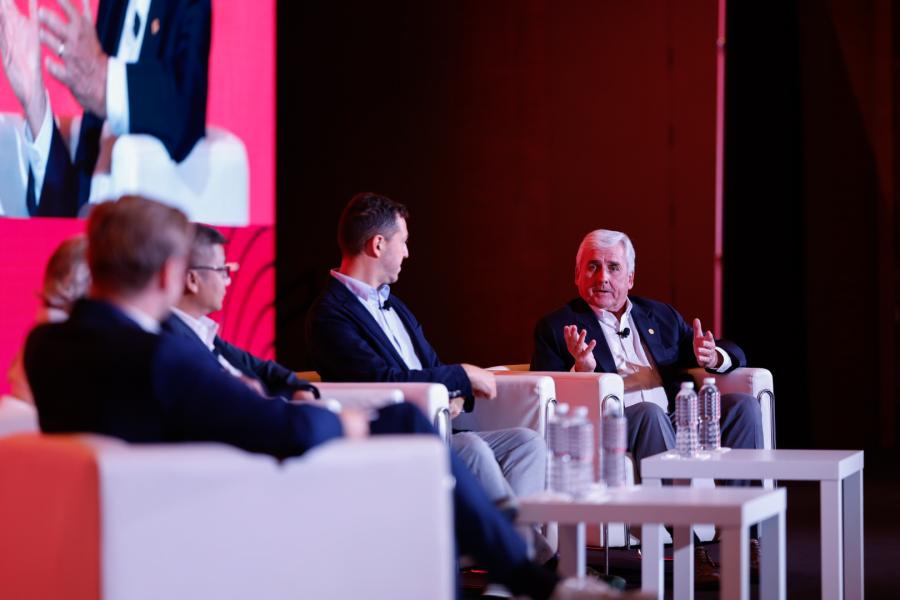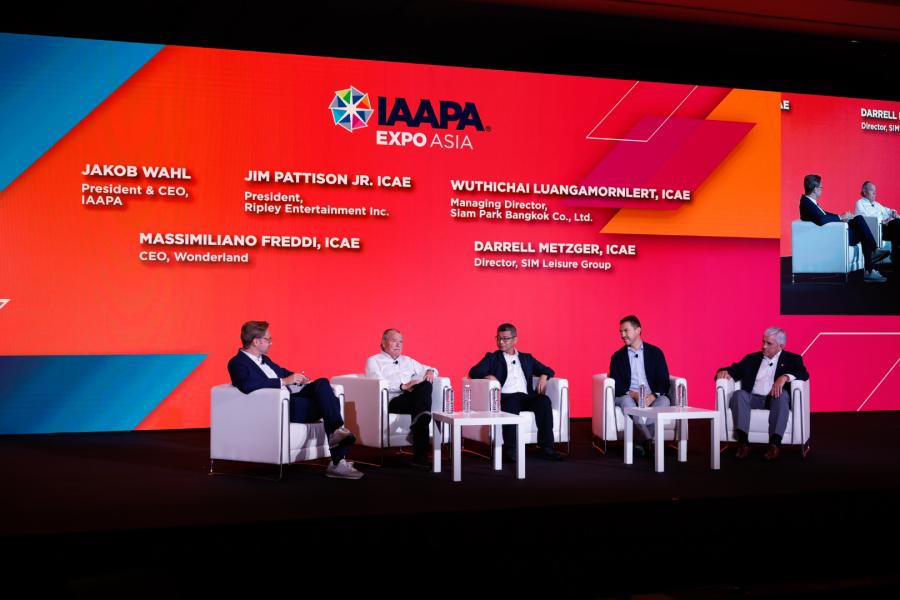Perhaps no challenge dominates the attractions industry in today’s post-COVID-19 world more than talent and staffing. The topic was top of mind at a gathering of industry leaders at IAAPA Expo Asia 2023.
“During COVID-19, we tried to keep as many people as we could but, of course, people left the industry. We’ve tried to recruit more people, but the problem is that they are not experienced and sometimes they are not good at service,” explains Siam Park Bangkok Managing Director and IAAPA First Vice Chair Wuthichai Luangamornlert, who estimates that nearly 40% of his team consists of new recruits.
“It's a problem that you cannot avoid,” Luangamornlert says. “You have to deal with a newer generation. Let them in, let them try and experience, and give them responsibility.”
Luangamornlert was speaking at the first in-person IAAPA Expo in Asia in four years. He was joined on stage by four industry veterans: IAAPA President and CEO Jakob Wahl; Ripley Entertainment President and IAAPA Chairman Jim Pattison Jr.; Sim Leisure Group Director Darrell Metzger, who is a former chairman of IAAPA; and Wonderwood CEO and IAAPA Second Vice Chair Massimiliano Freddi.
Hiring Strategies
“Finding the right people is your number one priority from where we are at least,” says Pattison. “Get the right people, give them the opportunity to be successful, then your company will grow.”
For Pattison, the search for talent starts with corporate culture. Defining your company’s culture will help attract the right talent.
“Empower the people you trust to bring in new people that they think they can train,” Pattison advises. “They will adapt to our culture and add to it.”
Managing Talent
Not every hire will be the right one. If there is a staff member who is not the right fit, Pattison advises leaders to listen to their teams and to act quickly.
“If you make a bad hire and don't deal with that problem right away, it will infect the rest of your team in a hugely negative way. You're better to have nobody in the job until you find the right person.”
Be careful, though, not to create a culture that is risk averse.
“I am very clear with my staff that if they're not making mistakes, then they're not making difficult decisions,” says Metzger. “If you make a mistake, then fix it. It's as simple as that. That's part of the learning process. It's better to get it done than to get it perfect.”
Metzger’s strategy for talent acquisition is to “hire people smarter than me.”
“I want to be the dumbest guy in the room. I'm just there to coordinate and manage. I'm not there to tell them their specialty.”
Generational Considerations
Younger employees—who account for a large percentage of new hires in the attractions industry—often have different needs and expectations that companies need to recognize if they want to attract talent and keep their team members fulfilled.
“I’m in my forties, but I need to reconnect every day with people in their twenties and teens,” says Wonderwood’s Freddi. “They come with strong ideas about what success means to them, which is so different from what success meant to me."
“I had a personal goal of making a career. I wanted to succeed and that meant having a manager's position in a company that I admired. Right now, I think it's much more fluid. They measure success, though their personal lenses. For them, success is to say, ‘today was a day worth living.’”
Freddi argues that promoting environmental sustainability and offer fully transparency are crucial for retaining younger workers.
“They want a job that reflects their own personal values. They reject greenwashing. If we tell them a story that doesn’t reflect their experience, they will leave,” he says.
Freddi also suggests that companies need to allow for better work-life balance and tolerate greater use of social media.
While labor shortages and staffing challenges are expected to continue for the foreseeable future, the attractions industry overall is enjoying a resurgence and expanding in unexpected ways.
“There is more entertainment being developed and attractions being built all over the world than there ever has been before. Our industry is getting bigger—much bigger—and we should be paying attention to fringe opportunities.”





